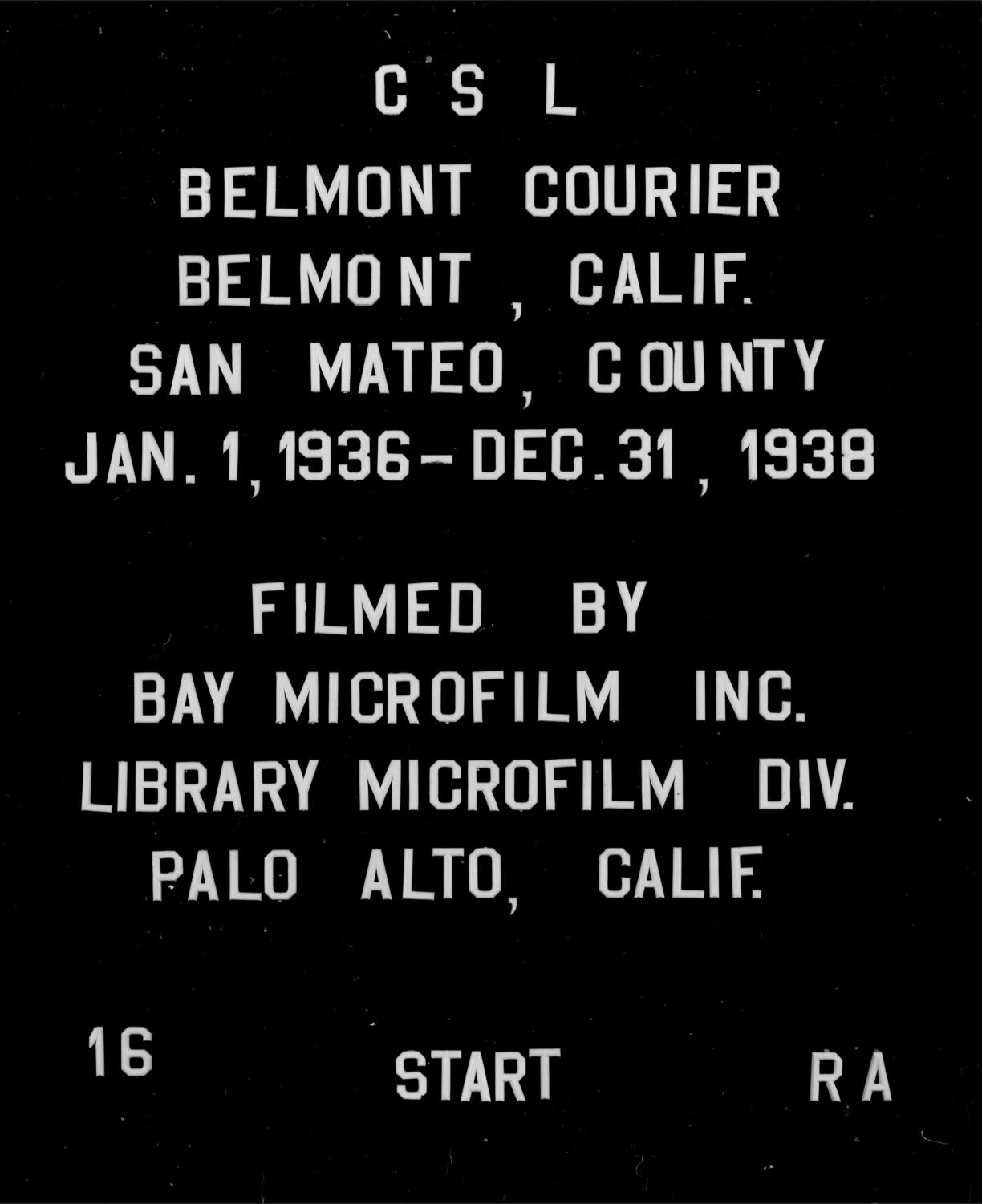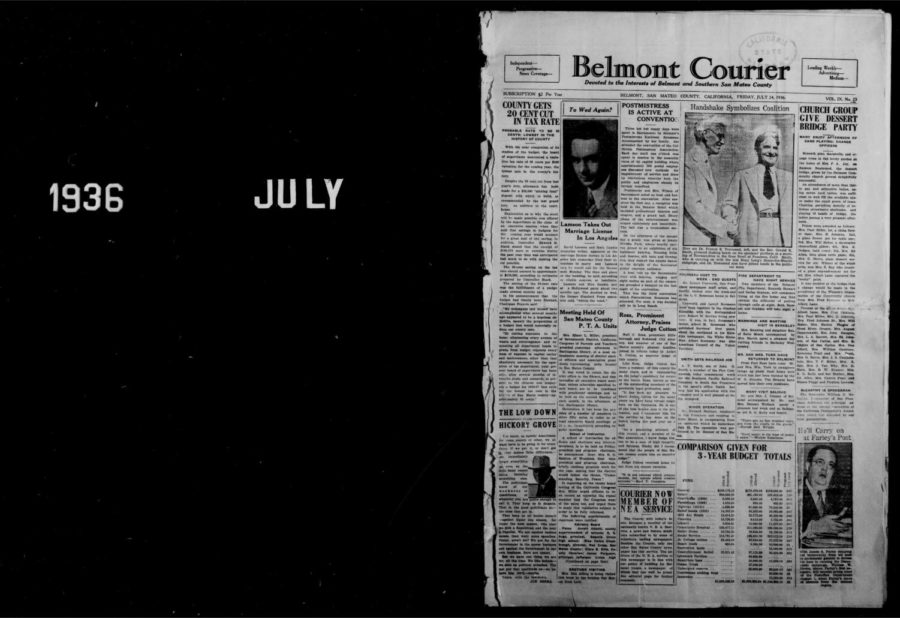Shameless plug here: for the past year or so I’ve been working with UC Riverside to obtain, using money generously gifted to the Belmont Historical Society by the City Council, about 83 years of newspaper archives that were stored in their library.
Though it might seem difficult to believe now, Belmont did, for decades, have its own paper in weekly circulation. It went through a few different phases of being — originally it was called the Belmont Courier until it merged with San Carlos’s publication, the Bulletin, to become the Courier-Bulletin, under which moniker it operated for several years until it merged with the San Carlos Enquirer.
Last week, after a little over a year of working with their librarian to sort through an untidy mess of badly-kept records and missing reels, I received the first batch of scanned images. It amounted to a little over two terabytes of data in the form of uncompressed, raw images.
The next step, which could take months, is to index all of the text on every page so that they can be searched based on keywords. Then they’ll have to be sorted based on year or issue date or something, as, currently, they all have names like “79261_0003.tif”. Not very helpful, clerically speaking. But for now, I’ve just been flipping through the scans, browsing local trivia from decades’ past, soaking in the history and trying to figure out what about them is so fascinating.
The local press, for all intents and purposes, has gone the way of Sears. There once existed a robust apparatus of quasi-independent news outlets covering Peninsula events; everything from local government to civic groups to weddings. But those days are long gone. The San Mateo Times, after over 100 years of wide circulation, finally reached the end of a graphic fight for survival in 2016. The city weeklies (of which Belmont’s was one) were absorbed into The Independent, which ate it in 2005. The Palo Alto Daily Post has, last I checked, two staff writers; the Daily Journal has three. At the County Center in Redwood City, the press room was repurposed into a finance department annex about a decade ago. Depending on where you are, you can expect to find city council meetings of consequence populated with maybe one reporter.
The reasons for the demise of the local press are numerous and predictable. Simply put: we get our news elsewhere. Yet the platitudes we like to apply to the slow, agonizing death of the national press (television, Twitter, some kind of mythical collective dumb-down, the Internet) seem not to apply to local news.
After all, Twitter might be reliable for issues of national relevance, but chances are there won’t be real-time coverage of local politics or future city events. Nor is Nextdoor going to hold local politicians accountable in any organized, thorough fashion. These arms of the local press, that is, to check our local governments and extract transparency from our local officials, are quickly evaporating.
Which, I think, is why these old newspapers are so interesting. It constructs an era which would otherwise have been lost to time. It recalls an era when the transmission of news was a professional enterprise, powered by staff writers, beats, investigations, and an industry whose job it was to convey information accurately.
That isn’t to say the Belmont Courier-Bulletin was a Pulitzer-worthy publication. Flipping through it briefly, I’ve already found a place where they misspelled America in a headline. While I can’t say for sure since it stopped publishing decades before I was born, it looks to me like it was a crappy local weekly. But that’s a far cry better than anything we have now.
I’m a pretty firm believer that a great deal of the self-indulgent nonsense that went on in Belmont in the mid-to-late 2000s was a direct consequence of the fact that there wasn’t an angry mob of local reporters holding their feet to the flame. They were badgered a bit by the Independent and the Daily Journal and even the Times, sure. They even received a bit of national attention once. But most of their absurdities went unnoticed because there was no standardized channel for the transmission of local news to the public; no place for them to receive it, and no body to process it.
It recalls an era when issues of local volume had similar weight as national issues.
I have no doubt that there are political bodies in San Mateo County whose methods are none-too-pure, and it’s no secret that there are politicians here whose goals are less than noble. But I find it difficult to imagine a reality in which their malfeasance will ever be uncovered by a journalistic body. That we have lost a part of the equation which once balanced the interests of the public with the interests of government is yet another casualty of the fall of the local press.
Looking through these 80-odd years of newspapers is a reminder of just what has been lost, both here and in cities throughout the country. The Columbia Journalism Review calls them “news deserts:” vast swaths of territory in the United States where the death of local press organizations has left them without a reliable source of news. Looking at an interactive map on their website, there are a frightening number of entire counties in the United States without daily newspapers.
I hope that, as I get these newspapers parsed and uploaded, some will find it a valuable source of local history. I also hope it serves to some degree as a reminder of the enormous and critical value of the waning local press.
I also owe an enormous debt of gratitude to those in the past who documented the events of their present. Without them, untold volumes of local history would be lost.



